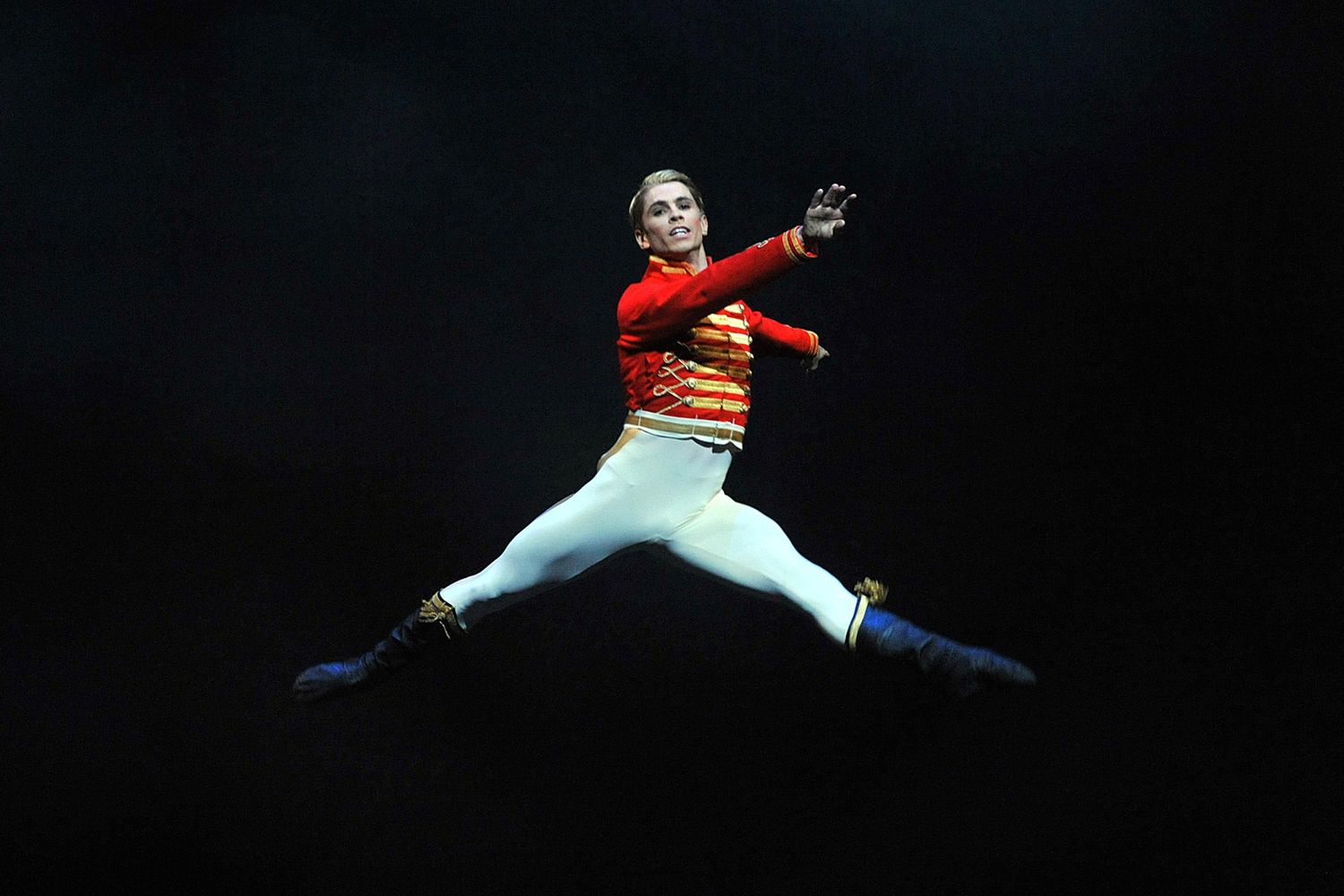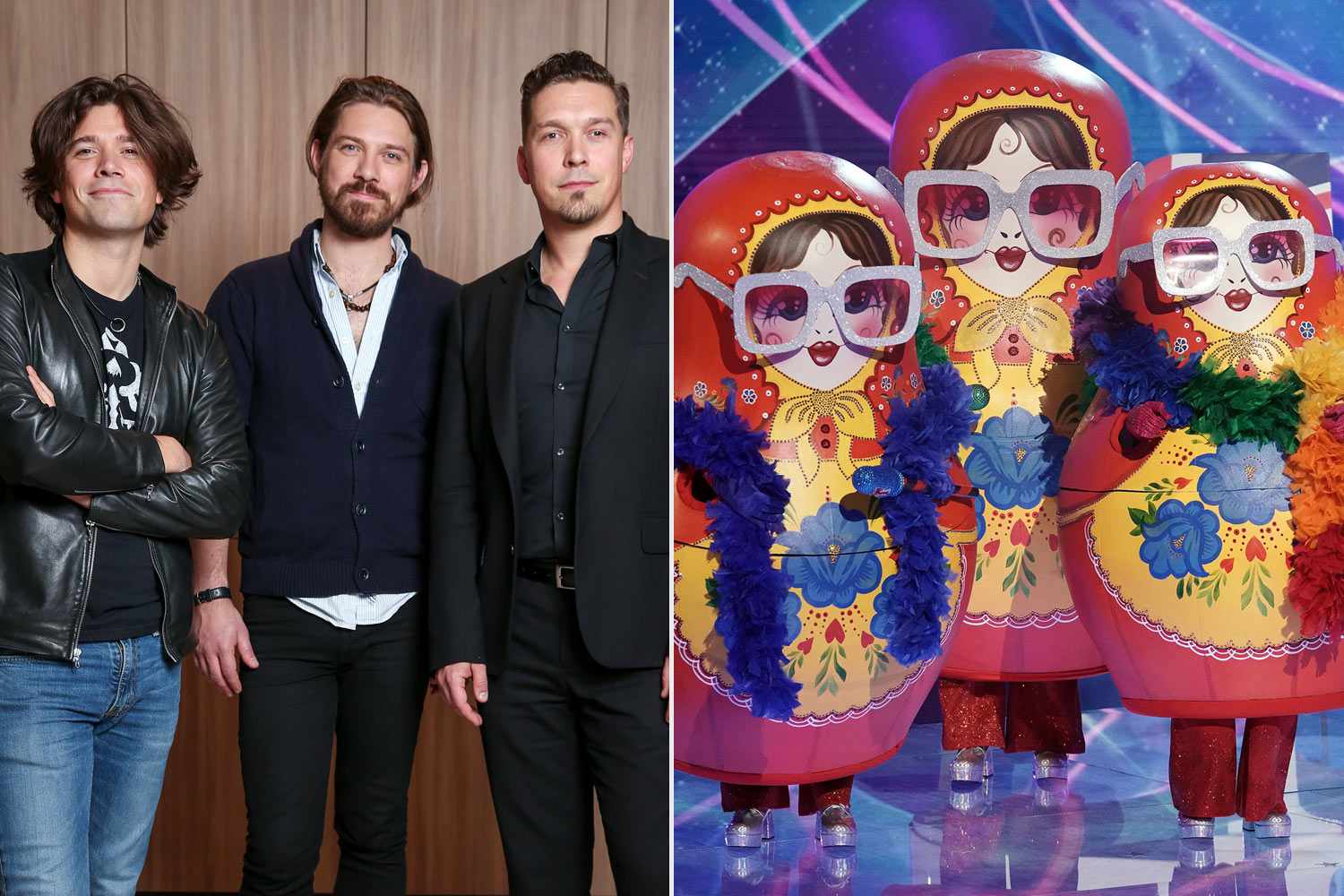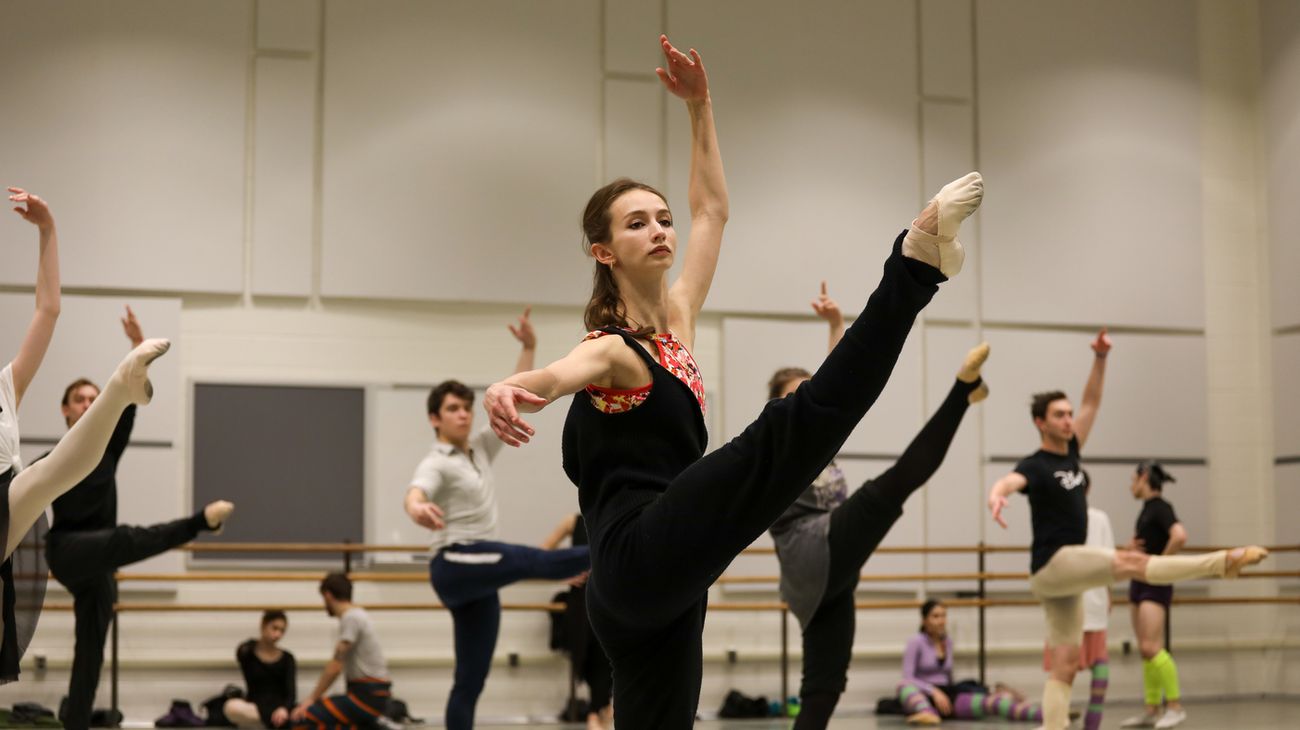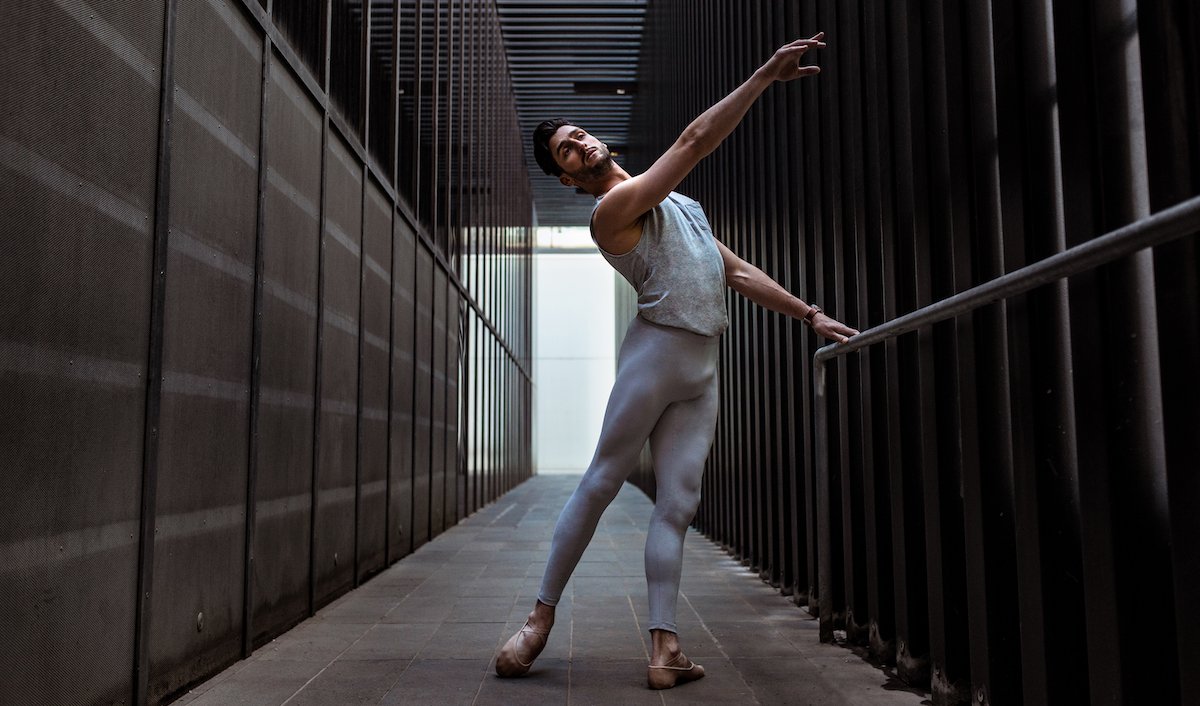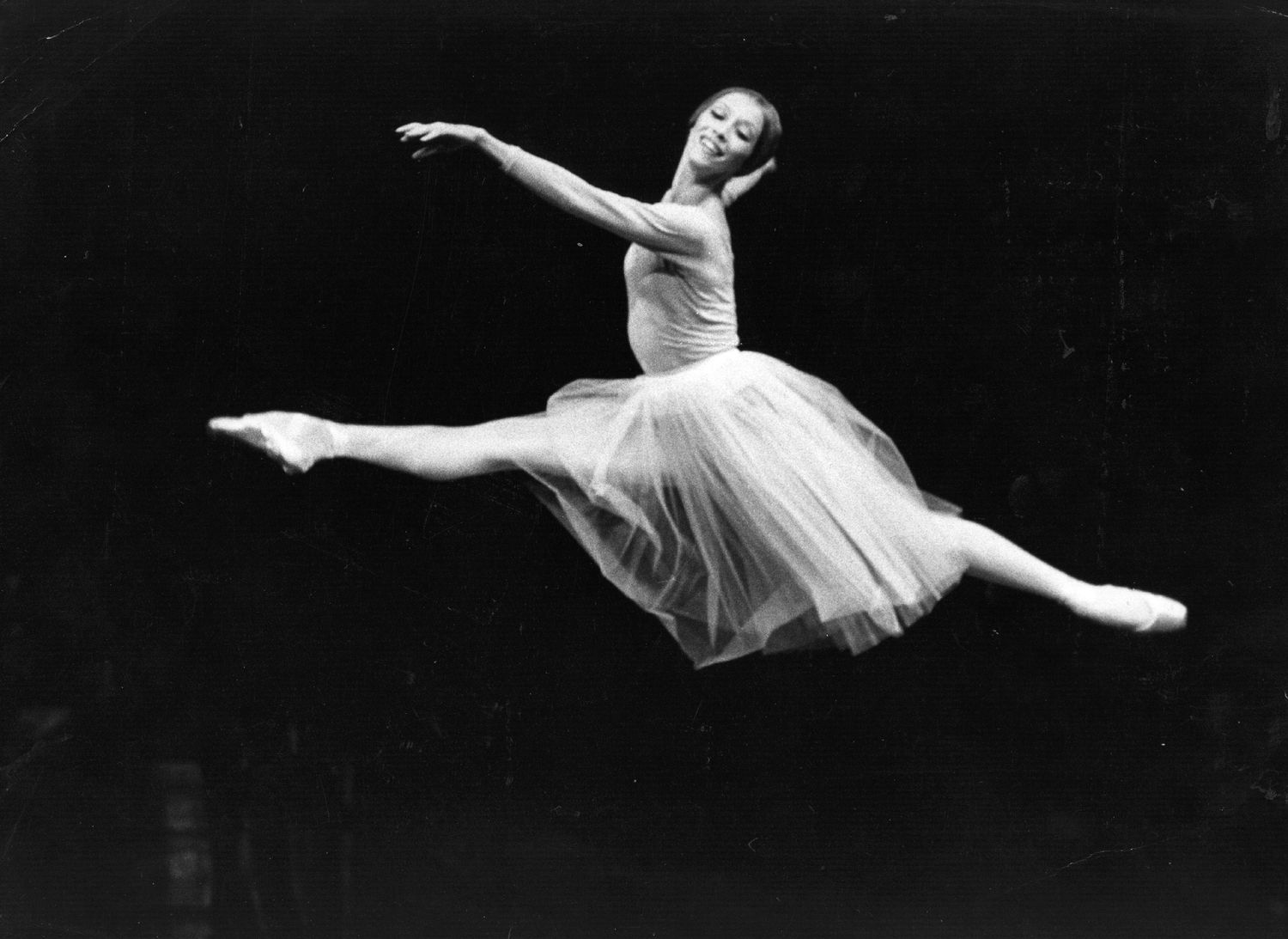Home>Events & Info>Ballet>Russian Ballet Dancers Who Defected
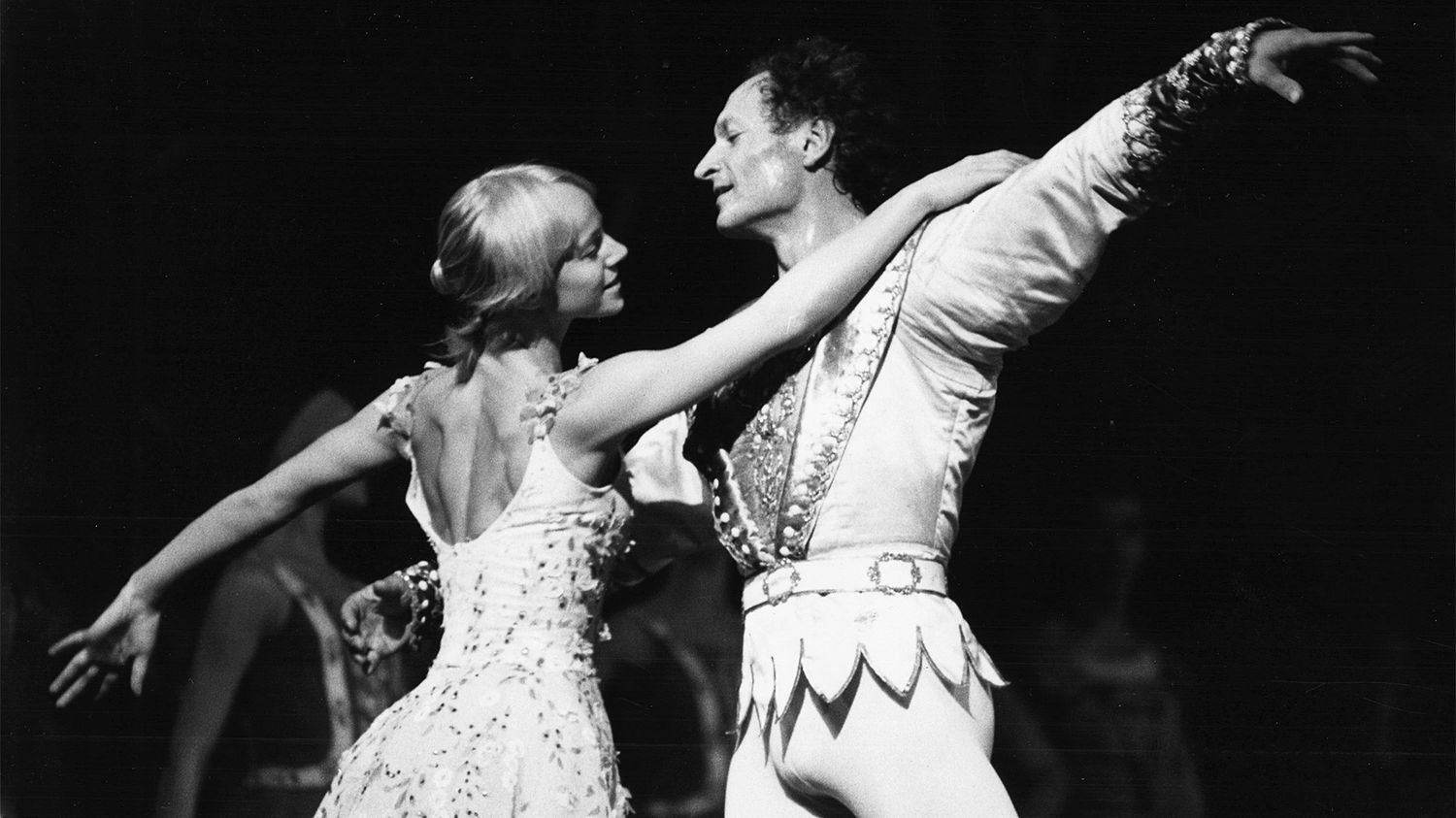

Ballet
Russian Ballet Dancers Who Defected
Modified: January 22, 2024
Discover the captivating stories of Russian ballet dancers who defected, leaving behind their homeland in pursuit of artistic freedom. Explore the inspiring journeys of these ballet artists.
(Many of the links in this article redirect to a specific reviewed product. Your purchase of these products through affiliate links helps to generate commission for AudioLover.com, at no extra cost. Learn more)
Table of Contents
Introduction
Russian ballet, with its esteemed tradition and mastery of technique, has produced some of the greatest dancers in history. However, behind the dazzling performances and graceful movements lies a tumultuous history. The Soviet era, marked by strict control and censorship, led to a number of talented ballet dancers seeking freedom and artistic expression beyond the Iron Curtain.
This article explores the fascinating world of Russian ballet defections. These courageous dancers risked everything – their careers, families, and personal safety – to pursue their passion on international stages. Their stories not only shed light on the challenges faced by artists in an oppressive regime but also highlight the enduring power of ballet as an art form that transcends borders.
Through the course of this article, we will delve into the backgrounds, motivations, and enduring legacies of four famous Russian ballet dancers who defected: Rudolf Nureyev, Mikhail Baryshnikov, Natalia Makarova, and Natalia Osipova. Each of these remarkable individuals left an indelible mark on the world of ballet, captivating audiences with their unparalleled talent and artistry.
Background on Russian Ballet Defection
The era of Russian ballet defections can be traced back to the Soviet Union, which tightly controlled every aspect of artistic expression. Under the communist regime, ballet dancers faced numerous challenges, including restrictions on creativity, limited opportunities for international performances, and strict regulations imposed by the state-run ballet companies.
The Soviet government believed that ballet was a powerful propaganda tool and sought to maintain control over its development and dissemination. Ballet companies were expected to adhere to a strict socialist realism aesthetic, showcasing patriotic themes and glorifying the Soviet regime. Any deviation from these guidelines could result in severe consequences for the artists involved.
Despite these constraints, many Russian ballet dancers longed for artistic freedom and the opportunity to explore their craft on a global stage. The desire for self-expression, coupled with the allure of the West and the promise of greater artistic opportunities, fueled the aspirations of those seeking to defect.
Additionally, the intense competition and high pressures within the Russian ballet world added to the allure of defection. Dancers faced fierce rivalries, limited career prospects, and often lived in cramped conditions. The opportunity to escape these constraints and pursue a more fulfilling artistic path was a powerful motivation for many.
Defecting, however, was not a decision to be taken lightly. It involved leaving behind family, friends, and the only life they had known. The repercussions for defectors and their loved ones could be severe, ranging from social ostracism to threats and persecution by the Soviet authorities.
Yet, despite the risks and challenges, a number of exceptionally talented dancers made the courageous decision to defect, forever changing the landscape of ballet and leaving an indelible mark on the art form.
Famous Russian Ballet Dancers Who Defected
Over the years, several prominent Russian ballet dancers have defected, seeking freedom and artistic opportunities beyond the confines of the Soviet Union. Their courage and talent have cemented their place in ballet history. Let’s explore four of the most renowned defectors:
1. Rudolf Nureyev
Rudolf Nureyev, often hailed as one of the greatest male ballet dancers of all time, shocked the world in 1961 when he defected from the Kirov Ballet during a tour in Paris. Nureyev’s daring act sparked international attention and forever changed the course of his career. He went on to become a principal dancer with the Royal Ballet in London and later with the American Ballet Theatre. Nureyev’s powerful technique, charismatic stage presence, and artistic innovation continue to inspire dancers to this day.
2. Mikhail Baryshnikov
Mikhail Baryshnikov, another iconic figure in the ballet world, defected from the Soviet Union in 1974 while on tour with the Kirov Ballet in Canada. Recognized for his impeccable technique and extraordinary athleticism, Baryshnikov became a principal dancer with the American Ballet Theatre and later served as the artistic director of the American Ballet Theatre and New York City Ballet. His contributions to ballet as both a performer and an artistic leader have established him as a legend in the dance community.
3. Natalia Makarova
Natalia Makarova, a prima ballerina with the Kirov Ballet, defected in 1970 during a visit to London. Known for her exquisite artistry, dramatic interpretations, and effortless technique, Makarova went on to have an illustrious international career. She became a principal dancer with the Royal Ballet in London and later joined the American Ballet Theatre. Makarova’s performances were characterized by their emotional depth and technical brilliance, solidifying her reputation as one of the greatest ballerinas of her time.
4. Natalia Osipova
Natalia Osipova, a contemporary ballet star, defected from the Bolshoi Ballet in 2011. Renowned for her versatility, fearless approach, and incredible jumping ability, Osipova quickly gained international acclaim. She became a principal dancer with the Royal Ballet in London and later joined the Mikhaylovsky Theatre in St. Petersburg. Osipova’s dazzling performances and magnetic stage presence have captivated audiences worldwide, establishing her as one of the leading dancers of her generation.
These four defectors, among others, not only brought their immense talent to the international stage but also left an indelible impact on the art of ballet. Their courage to break free from the constraints of the Soviet ballet world enabled them to explore new artistic horizons and inspire generations of dancers to follow their dreams.
Rudolf Nureyev
Rudolf Nureyev, born on March 17, 1938, in Irkutsk, Siberia, was a renowned ballet dancer and choreographer. He is widely regarded as one of the greatest male dancers in the history of ballet. Nureyev’s incredible talent, magnetic stage presence, and rebellious spirit revolutionized the world of dance.
Nureyev rose to fame as a principal dancer with the Kirov Ballet (now the Mariinsky Ballet) in Leningrad (now St. Petersburg). He captivated audiences with his extraordinary technique, incredible leaps, and articulate footwork. However, Nureyev’s artistry was not confined to the boundaries of the Soviet Union. He longed for artistic freedom and sought opportunities beyond the limitations imposed by the state-run ballet companies.
In 1961, during a tour with the Kirov Ballet in Paris, Nureyev made the bold decision to defect. Fearing the restrictions and censorship that awaited him back in the Soviet Union, he sought asylum in France. The news of his defection immediately gained worldwide attention, making headlines and shocking the ballet community.
With the support and guidance of influential figures in the dance world, Nureyev quickly established himself as a force to be reckoned with. He became a principal dancer with the Royal Ballet in London, where he collaborated with renowned ballerinas such as Margot Fonteyn. Nureyev’s partnership with Fonteyn became legendary, with their performances igniting the stage and setting a new standard of excellence.
Throughout his career, Nureyev’s artistic brilliance continued to evolve, as he not only excelled as a dancer but also explored choreography. He began creating ballets, infusing them with his own unique style and vision. His choreographic works, such as “Raymonda” and “The Nutcracker,” showcased his intricate storytelling and innovative movements.
Nureyev’s impact on the world of ballet cannot be overstated. He shattered traditional gender roles in ballet, emphasizing the importance of male dancers as powerful and expressive artists. His technical prowess, dramatic interpretations, and charismatic stage presence inspired countless dancers and choreographers.
Tragically, Nureyev’s life was cut short by AIDS-related complications, and he passed away on January 6, 1993. His legacy lives on, not only in the memories of those who witnessed his extraordinary talent but also in the continued influence he has on the world of ballet.
Rudolf Nureyev will always be remembered as an iconic figure who pushed the boundaries of ballet, blending technical precision with emotional depth and paving the way for future generations of dancers to explore new artistic possibilities.
Mikhail Baryshnikov
Mikhail Baryshnikov, born on January 27, 1948, in Riga, Latvia, is widely regarded as one of the greatest ballet dancers of all time. Known for his extraordinary technique, remarkable versatility, and unmatched charisma, Baryshnikov’s contributions to the world of dance are immeasurable.
Baryshnikov began his dance training at a young age, honing his skills at the Vaganova School in Leningrad (now St. Petersburg). He quickly rose through the ranks, joining the Kirov Ballet as a principal dancer in 1967. However, like many other Russian ballet dancers of his time, Baryshnikov yearned for artistic freedom and sought opportunities beyond the confines of the Soviet Union.
In 1974, while on a tour with the Kirov Ballet in Canada, Baryshnikov made the courageous decision to defect. Faced with the prospect of returning to a life under strict Soviet control, he sought political asylum and embarked on a new chapter in his career. His defection stunned the ballet community and marked a turning point in his life.
After defecting, Baryshnikov joined the American Ballet Theatre (ABT) and quickly established himself as a leading dancer. His performances were marked by extraordinary athleticism, impeccable technique, and a unique blend of classical and contemporary artistry. Baryshnikov’s collaborations with renowned choreographers, including George Balanchine and Jerome Robbins, further showcased his versatility and ability to transcend traditional ballet boundaries.
Baryshnikov’s impact extended beyond the stage. He became a cultural ambassador for ballet and played a pivotal role in popularizing the art form to a broader audience. His appearances in popular media, such as television and film, brought ballet into the mainstream. Notably, his portrayal of Russian ballet dancer Yuri Kopeikine in the film “The Turning Point” garnered critical acclaim and earned him an Academy Award nomination.
Throughout his career, Baryshnikov continued to push the boundaries of ballet. He expanded his artistic repertoire, dancing in a wide range of styles and genres, including modern and contemporary works. His artistic curiosity and willingness to take risks cemented his status as a true innovator in the dance world.
After his tenure at ABT, Baryshnikov became the artistic director of both ABT and the White Oak Dance Project. As an influential leader, he nurtured young talent, supported emerging choreographers, and championed the importance of artistic exploration and growth.
Today, Baryshnikov’s legacy continues to inspire dancers and audiences alike. His unparalleled talent, passion for the art form, and unwavering dedication to excellence have made an indelible impact on the world of ballet. Mikhail Baryshnikov will forever be remembered as a true icon and a legend of dance.
Natalia Makarova
Natalia Makarova, born on November 21, 1940, in Leningrad (now St. Petersburg), is a renowned Russian ballet dancer who defected from the Soviet Union in 1970. Makarova’s artistry, technical brilliance, and exquisite interpretations have established her as one of the greatest ballerinas of her time.
Makarova began her training at the prestigious Vaganova Ballet Academy, where she studied under renowned ballet teachers. Her talent and dedication quickly propelled her into the ranks of the Kirov Ballet (now the Mariinsky Ballet), where she rose to become a principal dancer. Makarova’s performances were marked by a combination of technical precision, emotional depth, and a captivating stage presence.
Despite her success within the Kirov Ballet, Makarova longed for artistic freedom and the opportunity to explore her art beyond the confines of the Soviet regime. In 1970, during a tour with the Kirov Ballet in London, she made the courageous decision to defect, seeking asylum in the West.
Following her defection, Makarova joined the Royal Ballet in London as a principal dancer. Her performances in classic ballets such as “Giselle,” “Swan Lake,” and “La Bayadère” were hailed for their sublime artistry and technical perfection. Makarova’s ability to seamlessly blend impeccable technique with deep emotion made her a beloved and admired ballerina.
Throughout her career, Makarova sought to expand her artistic horizons and embrace new challenges. She collaborated with prominent choreographers, including Sir Kenneth MacMillan and John Neumeier, who created roles specifically for her. Makarova’s interpretation of these roles showcased her extraordinary ability to convey complex characters through dance.
In addition to her work as a dancer, Makarova has also made contributions as a teacher and coach. Her vast knowledge and experience have been shared with numerous ballet companies and aspiring dancers around the world. She has embraced her role as a mentor, passing on her artistry and technical expertise to future generations.
Natalia Makarova’s legacy extends beyond her exceptional performances. Her defection from the Soviet Union symbolized the quest for artistic freedom and the desire to explore new artistic possibilities. Her impact on ballet, both through her performances and her influence as a teacher, has left an enduring mark on the art form.
Today, Natalia Makarova is recognized as a true icon of ballet and a symbol of artistic courage and determination. Her contributions to the world of dance continue to inspire and captivate audiences worldwide.
Natalia Osipova
Natalia Osipova, born on May 18, 1986, in Moscow, Russia, is a prodigious Russian ballet dancer known for her exceptional artistry, technical virtuosity, and captivating stage presence. Her talent and versatility have earned her widespread acclaim and recognition as one of the leading dancers of her generation.
Osipova began her training at the Moscow State Academy of Choreography. She quickly garnered attention for her boundless energy, stunning flexibility, and extraordinary jump. Her unique ability to seamlessly blend classical ballet technique with contemporary styles set her apart from her peers.
Osipova joined the Bolshoi Ballet in 2004 and rose through the ranks to become a principal dancer. Her performances in classic ballets such as “Don Quixote,” “Giselle,” and “Swan Lake” dazzled audiences and showcased her technical prowess and emotive range. Osipova’s dynamic stage presence, combined with her impeccable technique, left a lasting impression on audiences around the world.
In 2011, Osipova made the decision to leave the Bolshoi Ballet and join the Royal Ballet in London as a principal dancer. Her move to the West allowed her to explore new artistic opportunities and collaborate with renowned choreographers from diverse backgrounds. She continued to amaze audiences with her versatility, tackling a wide range of roles in both classical and contemporary ballets.
Osipova’s performances are characterized by their emotional depth, athleticism, and fearless approach. Her ability to fully embody the characters she portrays, combined with her technical precision, creates a mesmerizing on-stage presence. Audiences are routinely captivated by her ability to convey a wide range of emotions through her movements.
Beyond her work in traditional ballet, Osipova has also embarked on collaborations with contemporary choreographers, pushing the boundaries of the art form. She has embraced the opportunity to experiment with different movement styles and explore new ways of storytelling, further establishing herself as a versatile and forward-thinking dancer.
Natalia Osipova’s contributions to the world of ballet have earned her numerous awards and accolades throughout her career. Her unwavering dedication, determination, and commitment to her craft continually inspire aspiring dancers and ignite the passion of audiences worldwide.
As Osipova continues to evolve as an artist, her magnetic stage presence and unparalleled talent solidify her place among the greats of ballet. Her dynamic performances and unwavering commitment to pushing artistic boundaries make her a true star of the dance world.
Reasons for Defection
The decision to defect from the Soviet Union and seek artistic freedom abroad was a deeply personal and often heartbreaking choice for Russian ballet dancers. Several key factors contributed to their motivations for defection:
1. Artistic Freedom:
Under the Soviet regime, ballet dancers faced restrictions on artistic expression. The state-controlled ballet companies upheld strict guidelines, limiting creativity and imposing an emphasis on socialist realism. Defecting provided an opportunity for artists to explore new artistic horizons and break free from the constraints of the system.
2. Limited International Opportunities:
In the Soviet Union, ballet dancers had limited opportunities to perform and collaborate on an international stage. This lack of exposure to the global ballet scene meant that their careers were often confined within the borders of the Soviet Union. Defecting offered the chance to work with renowned ballet companies and choreographers worldwide, enhancing their artistic development and visibility.
3. Political Dissatisfaction:
Soviet ballet dancers were not immune to the political and social discontent that simmered within the country. The strict control, censorship, and surveillance imposed by the regime left many feeling stifled and disillusioned. Defection allowed dancers to escape the oppressive conditions and embrace a life of artistic freedom and personal expression.
4. Escaping Rivalry and Limitations:
The world of ballet in the Soviet Union was intensely competitive. Dancers faced fierce rivalries and limited career prospects within the state-run ballet companies. Additionally, living conditions and resources for dancers were often lacking. Defecting offered the chance to escape these constraints, seek better opportunities, and pursue personal artistic growth.
5. Personal Fulfillment:
Ultimately, ballet dancers who defected were driven by a deep desire for personal fulfillment. They longed for the chance to fully explore their artistic potential and find their own artistic voice. Defection provided the opportunity to pursue their passion on their own terms, away from the limitations and pressures of the Soviet system.
Each defection story is unique, shaped by a complex interplay of personal and artistic motivations. The bravery and resilience of these Russian ballet dancers serve as a testament to the enduring power of artistic freedom and the human spirit.
Impact and Legacy of Russian Ballet Defectors
The legacy of Russian ballet defectors reverberates throughout the dance world, leaving a lasting impact on the art form. These courageous dancers, who risked everything to seek artistic freedom beyond the Iron Curtain, have made significant contributions and shaped the landscape of ballet in several ways:
1. Artistic Influence:
Russian ballet defectors introduced new styles, techniques, and approaches to ballet. Their unique artistic perspectives and experiences from both the Soviet and Western ballet worlds enriched the art form, fostering innovation and pushing the boundaries of traditional ballet. They brought a fresh perspective and infused their passion into their performances, inspiring generations of dancers and choreographers to explore new possibilities.
2. Technological Advancement:
Many defectors contributed to the technological advancement of ballet. With their exposure to Western ballet companies and access to advanced technologies, they brought new approaches to stagecraft and production. They introduced innovations in lighting, set design, costume construction, and sound engineering, enhancing the overall theatrical experience of ballet performances.
3. Broadening Repertoire:
Russian ballet defectors played a pivotal role in broadening the repertoire of ballet companies worldwide. Drawing from their diverse training backgrounds and exposure to different choreographers, they introduced a wider range of classical, neoclassical, and contemporary works to ballet companies. Their influence expanded the artistic possibilities for dancers and introduced audiences to new forms of expression and storytelling.
4. Global Recognition:
The defectors gained international recognition and acclaim, bringing attention to the talent and artistry within the Russian ballet community. Their defections sparked interest and curiosity about Russian ballet, leading to increased collaborations and cultural exchanges between Russian and Western ballet companies. This cross-pollination has fostered a deeper appreciation for the richness and diversity of the ballet art form.
5. Inspiration for Future Generations:
The bravery and determination of Russian ballet defectors have inspired countless dancers and artists around the world. Their stories of overcoming adversity and pursuing their artistic dreams serve as a reminder of the transformative power of ballet and the importance of artistic freedom. Their legacy continues to inspire new generations of dancers, encouraging them to follow their passions and strive for excellence.
The impact and legacy of Russian ballet defectors extend far beyond their individual achievements. They have shaped the evolution of ballet as an art form, contributing to its global popularity, innovation, and artistic growth. Their courageous acts of defection have left an indelible mark on the world of ballet, forever changing its trajectory and inspiring future dancers to continue pushing the boundaries of this beautiful art form.
Conclusion
The era of Russian ballet defection stands as a testament to the unwavering spirit and boundless talent of the dancers who sought artistic freedom beyond the restrictions of the Soviet Union. Through their acts of courage, Russian ballet defectors revolutionized the art of ballet, leaving an indelible mark on the dance world.
Rudolf Nureyev, Mikhail Baryshnikov, Natalia Makarova, Natalia Osipova, and others who followed in their footsteps, broke free from the oppressive regime, seeking opportunities to fully realize their artistic potential. Their exceptional talent, relentless pursuit of excellence, and unwavering commitment to their craft inspired audiences around the world.
The impact of these defectors extends beyond their individual accomplishments. They introduced new styles, pushed the boundaries of traditional ballet, and broadened the repertoire of ballet companies globally. Their influence inspired new generations of dancers to strive for artistic freedom and embrace innovation.
Russian ballet defectors not only paved the way for their own artistic journeys but also inspired others to challenge the status quo and pursue their dreams. Their legacy serves as a reminder of the enduring power of dance and the inherent human desire for self-expression.
While the challenges faced by Russian ballet defectors were significant, their stories continue to resonate and captivate audiences. Their courage and unwavering dedication serve as a beacon of inspiration, reminding us that artistic expression knows no boundaries or political constraints.
The enduring legacy of Russian ballet defectors is a testament to the transformative power of ballet as an art form and the enduring spirit of those who refuse to be silenced. Their impact will continue to shape the world of dance, inspiring future generations to embrace their artistic passions and create beauty that transcends borders.

